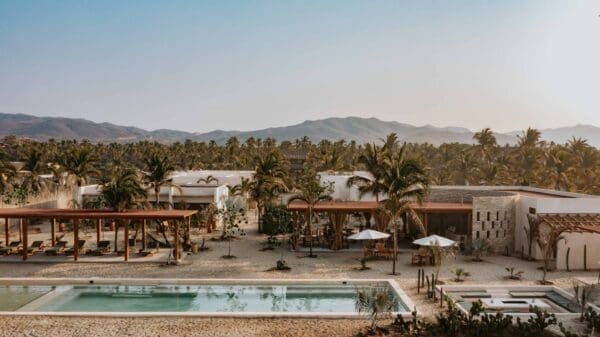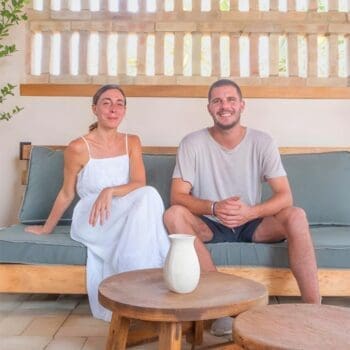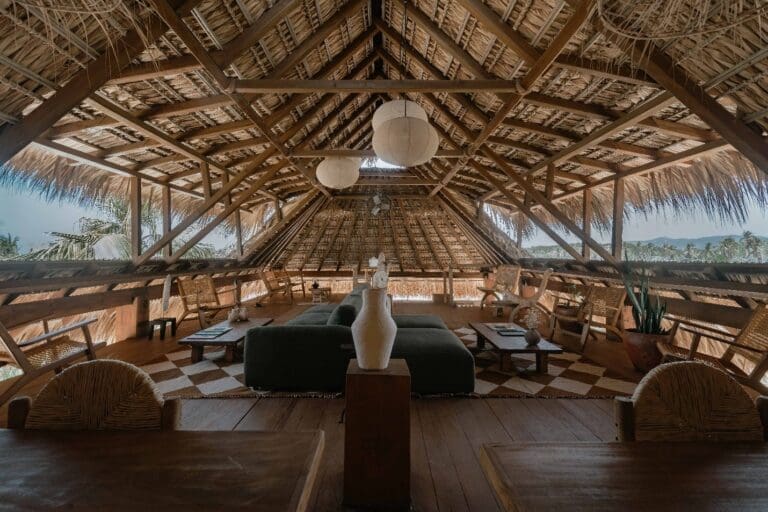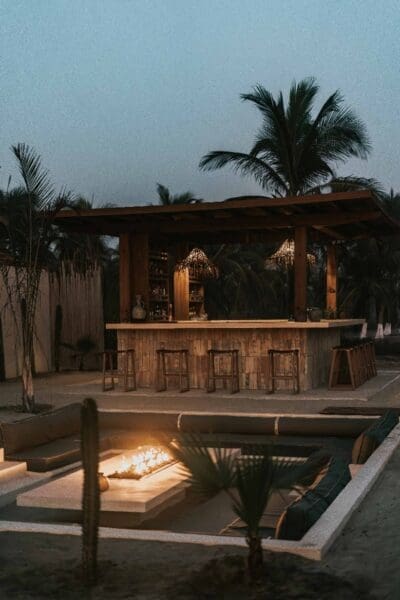 One of the biggest trends in hospitality right now is one that’s hard to spot in an aggregated market intelligence report. All over the world, travelers are seeking out authentic hotels that are firmly rooted in their environs and have a vibe that’s unlike any other accommodation, using the entirety of the internet and social media to plan for these incredible experiences.
One of the biggest trends in hospitality right now is one that’s hard to spot in an aggregated market intelligence report. All over the world, travelers are seeking out authentic hotels that are firmly rooted in their environs and have a vibe that’s unlike any other accommodation, using the entirety of the internet and social media to plan for these incredible experiences.
Behind the scenes – and what’s hard to quantify – is just how often the hotels curating these authentic experiences are led by independently spirited owners and operators who have a passion for hospitality and a clear vision for creating a unique property.
In this case, we’re speaking with Tim de Belloy – one of three owners of Casa Yuma alongside Camille Lambert and Sara Skalli – a 25-key boutique resort that opened in March 2024 along the Oaxacan coast in Southern Mexico. Specifically, Casa Yuma is nestled along the untouched white sand beach of Los Naranjos just a few kilometers outside of Puerto Escondido.
The Pacific Coast city is a quieter destination relative to Los Cabos or Puerta Vallarta, one that’s long been renowned for its legendary surfing at Zicatela Beach and yoga retreats in the La Punta neighborhood. Within only the past decade, though, Puerto Escondido has started booming with new developments and design hotels dotting the coastline.
Advertisements

For Casa Yuma, we’re focusing on the growth of the ‘barefoot luxury’ or ‘laidback luxury’ trend where modern guests’ idea of luxury is no longer just opulent décor and elaborate service but meaningful experience, in this case on a beach in Oaxaca. And the hotel’s founding story is as timeless as ever: a small group of friends fall in love with a destination then decide to open a hotel in order to help others discover the region and do as they did.
 What makes Puerto Escondido so special?
What makes Puerto Escondido so special?
Puerto Escondido has certainly had its moment in the surf and yoga worlds for a while, but what’s happened over the past decade is something deeper. I first came to the Oaxacan coast years ago, and immediately felt something I hadn’t experienced elsewhere in Mexico: a raw, grounding energy that connects you directly to nature.
Unlike more developed beach destinations, Puerto still feels wild in the best way; it’s vibrant but unpolished, laidback yet rich in culture. Puerto Escondido is a port and a town, so there is a life, agriculture, fisherman, businesses; as a tourist or guest, you blend with the locals. The people of Oaxaca kept their strong heritage and they won’t lose it to tourism!
What drew us specifically to Los Naranjos is that it remains remarkably untouched. You’re flanked by the mountains on one side and the Pacific on the other, and the only sounds you hear at night are the waves and the wind in the palms. It’s a part of Puerto where time slows down. There’s no commercial strip, no big resorts – just the land, the ocean and a small, tight-knit community that respects both.
We wanted Casa Yuma to reflect that spirit: serene, intentional and respectful of its surroundings. We didn’t want to build a hotel that interrupted the landscape; we wanted something that felt born from it. That’s what makes this stretch of coast so special. The goal to our architect was: If you are passing on the beach or on a boat, you can’t see that an hotel is there.
We love hearing hotel origin stories. How did you, Camille and Sara come together to create Casa Yuma?
Casa Yuma really started as a shared dream between friends. Sara, Camille and I were all drawn to Puerto Escondido for different reasons – its natural beauty, the rhythm of life here, the surf and the colors of the coast that change throughout the day and the season. It’s magical; but what brought us together was a mutual desire to build something meaningful. We would talk for hours about how hospitality could feel more personal, more connected to the place. At some point, the conversations stopped being hypothetical.
When you spend enough time in a place, you can feel its potential. We saw Puerto shifting before it hit the mainstream radar: creatives and travelers looking for authenticity, not just amenities; people who wanted to unplug, surf, connect and slow down yet be active! We felt this was the moment to protect that spirit while offering something beautiful and intentional.
The transition from friends to cofounders came naturally because there was trust and mutual respect. Each of us brought a different strength to the table – Sara with her design eye, Camille with operations, myself with the brand vision – and it felt like the most organic thing in the world to build Casa Yuma together.

The emergence of laidback or barefoot luxury that’s also family or friend owned and operated is a global phenomenon that transcends geography and demography. Can you speak to the types of guests that are coming to Casa Yuma?
What we’re seeing at Casa Yuma is this new kind of traveler – one who values substance over flash. Our guests are curious, conscious and often well-traveled. They care about where materials come from, who made them and whether the hotel is in harmony with its environment. They’re here for the surf, the sunsets, the mezcal, but also the sound of the waves breaking on the shore, the space and the chance to reconnect.
This idea of ‘barefoot luxury’ speaks to something bigger happening in hospitality. We invite people to walk and take their shoes off, just as if you were in your own beach house or in your house in summer. Today’s travelers, especially the newer generation, crave adventure, personality and spaces that feel personal and lived in. But more importantly, in a fast-paced, tech-driven world where we interact less face-to-face, we saw an opportunity to foster real human connection. That’s why we designed Casa Yuma with gathering in mind – creating warm, open common areas that naturally encourage conversation and connection among guests.
People want to slow down without sacrificing quality. And when a space is created by those who truly love it, that energy is felt in every detail. Sara and I personally installed every piece of furniture, room by room. That’s the magic of owner-operated properties. We’re not just running a hotel; we’re opening the doors to a world we’ve poured our hearts into. This segment of hospitality will only continue to grow, as travelers increasingly seek meaning, character and connection in the places they choose to stay.
Opening a boutique hotel is dream of practically every hotelier on the planet, and yet it’s a grueling, multi-year process. What challenges did you face along the way and how did you overcome them?
For us, building Casa Yuma was a true labor of love. We were determined to do it right, which meant taking the time to understand every nuance of the region, from navigating Mexico’s real estate laws to building sustainably in a remote beachfront location. It required patience, especially when it came to permitting and construction timelines, which tend to move at a different rhythm here. You have to be armed with patience and conviction!
We also chose to build in a way that honored the land, which added its own set of challenges. For example, working with Chukum and other local materials meant sourcing skilled artisans and adapting our design approach to the climate and terrain. But those challenges became part of the story; they’re why Casa Yuma feels the way it does.
Most importantly, we built strong relationships locally. That made all the difference. From day one, we collaborated with people who live here, who understand the place and care about its future. That mutual respect helped us overcome obstacles, both big and small. In the end, the challenges made the reward that much greater.
The push for having a flag is tremendous these days insofar as giving partners surety for forecasted RevPAR as well as distribution support. Was launching an independent hotel always part of the plan?
Launching Casa Yuma as an independent hotel was very intentional. From the beginning, we wanted complete creative freedom – to design an experience that felt personal, rooted in place and free from the rigidity that can come with being part of a larger flag. We didn’t want to follow a template; we wanted to build something organic that felt like a natural extension of Puerto Escondido.
Of course, going independent means more responsibility on the marketing and operations side, but the payoff is that everything – from our design choices to the way we welcome guests – is infused with our values.
 Puerto Escondido has been passingly described as ‘the next Tulum’ but I find this comparison to be belittling to Puerto! How is the region paving its own way in terms of design style and cultural offerings?
Puerto Escondido has been passingly described as ‘the next Tulum’ but I find this comparison to be belittling to Puerto! How is the region paving its own way in terms of design style and cultural offerings?
I completely agree; it’s tempting to compare Puerto Escondido to places like Tulum, but doing so really misses the soul of this region. Puerto isn’t trying to be anything other than itself. A big key factor is that key people that run Puerto Escondido are keeping the big clubs and parties away, so Puerto will never attract the same tourists and will never be ‘Tulum’.
The design ethos here is rooted in materials that are native to the land – like Chukum, a beautiful eco-conscious ‘vegetal concrete’ made from tree resin and limestone – and the use of Oaxacan brick, handcrafted wood and other elements that feel honest and enduring.
There’s a raw elegance to Puerto that comes not from imported ideas, but from a deep respect for nature and local culture. You see it in the food, the architecture, the pace of life. It’s less about trend and more about authenticity. At Casa Yuma, we tried to honor that spirit; nothing is overly polished, but everything is thoughtful.
Building on this previous point, how is Casa Yuma stewarding the area?
Stewardship is at the core of what we do. From day one, our approach was to build with the land, not on top of it. We used Chukum and other sustainable materials to minimize our environmental impact, and we work almost exclusively with local artisans – from the handwoven rugs in our rooms to the ceramic lamps and tiles you’ll find throughout the property.
In our restaurant, everything is sourced locally and seasonally. Our chefs work closely with regional producers and fisherfolk to highlight Oaxacan ingredients in a way that’s respectful and elevated; think handmade tamales, mole with fresh seafood, tortillas made right in front of you in our traditional oven.
One of the things we’re most proud of is that our entire team is made up of local talent. Everyone – from our front-of-house staff to our kitchen team – is from the region. That’s incredibly important to us. We want Casa Yuma to be a place that not only celebrates Puerto Escondido’s culture but actively contributes to its economy and future.
